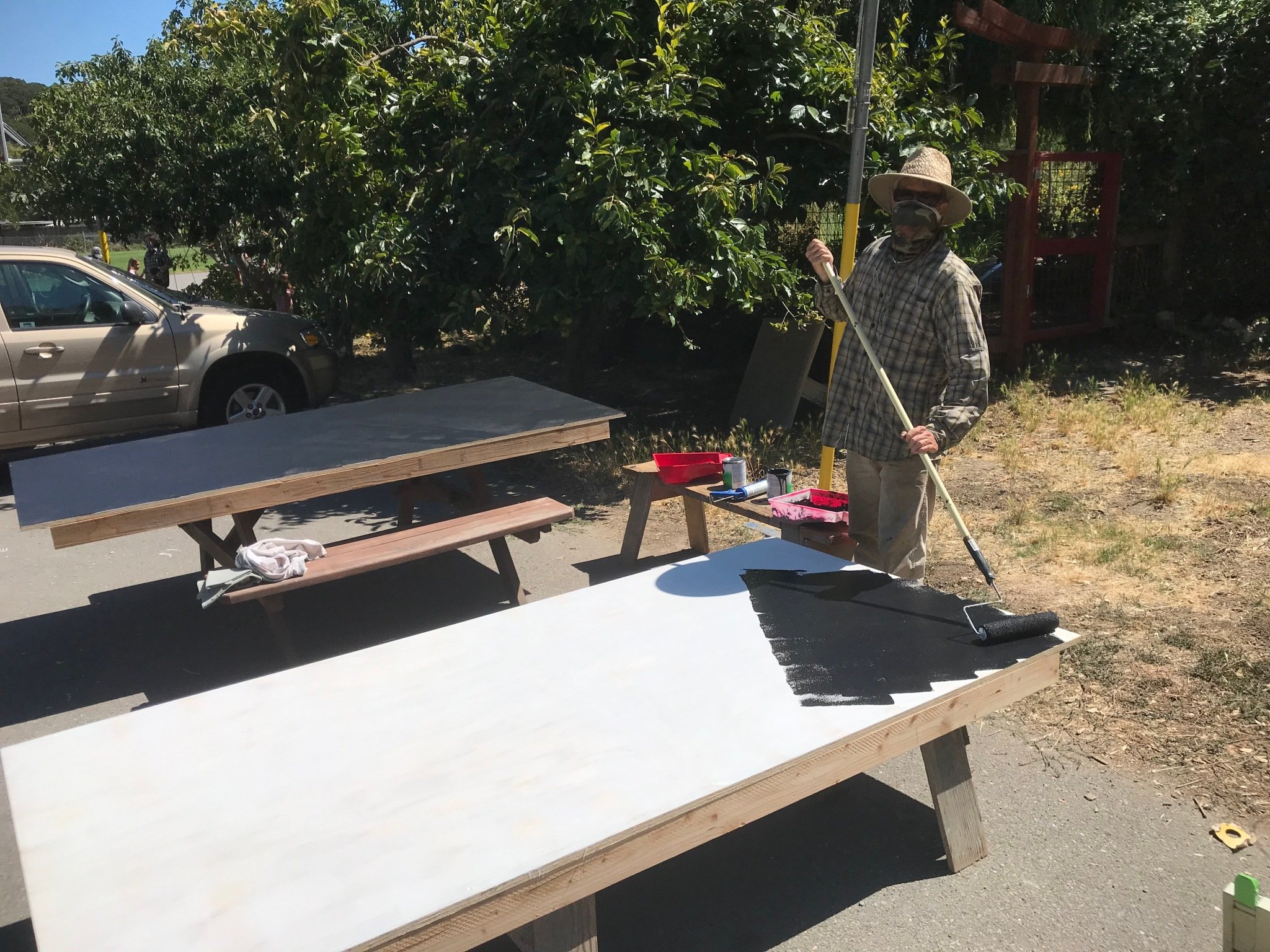The Great Outdoor Classrooms
At Marin Waldorf School, we nourish the relationship between children and the natural world. Starting in early childhood, our students spend ample time outdoors, playing, hiking, and lunching beneath the oak trees. As grades students, they hike in the open space that surrounds our school, care for and study our campus flora, and work in our school’s abundant garden.
We are building on that foundation now. This summer, we are creating open-air classrooms for each grade, scattered across our 13-acre campus. (In the drawing above, you can see a snippet of our reimagined campus map, with outdoor classrooms for each grade level.) The classrooms will allow for fresh air and maximum social distancing—and of course they will also be beautiful! To the left, our woodworking teacher Mr. Neale paints one of the blackboards that will be installed in each of the classrooms. Lap desks, hay bales, and sun shades will follow.
There is strong research to suggest that outdoor classrooms would be safer for students during a pandemic, but are they effective places to teach?
Last week, many people in our community noticed this fascinating story in the New York Times (right), which documents the use of outdoor classrooms in early 20th century New York to fight rampant tuberculosis infection in the city.
The article outlines the compelling safety reasons for building outdoor classrooms (“one of the few things we know about the coronavirus with any degree of certainty is that the risk of contracting it diminishes outside — a review of 7,000 cases in China recorded only one instance of fresh-air transmission”). However, it also outlines the emotional and pedagogical benefits of being outdoors.
Schools Beat Earlier Plagues With Outdoor Classes. We Should, Too.
By Ginia Bellafante
July 17, 2020
A century ago, children in New York City attended classes during a pandemic. It seemed to work.
Among other compelling research, author Ginia Bellafante shares the following: “A 2018 study conducted over an academic year looked at the emotional, cognitive and behavioral challenges facing 161 fifth graders. It found that those participating in an outdoor science class showed increased attention over those in a control group who continued to learn conventionally. At John M. Patterson, an elementary school in Philadelphia, suspensions went from 50 a year to zero after a playground was built in which students maintain a rain-garden and take gym and some science classes, the principal, Kenneth Jessup, told me.”
This morning, the Marin Independent Journal shared another story, “Marin school finds pandemic workaround: the outdoors,” about the local Terra Marin School in Mill Valley, which is going to be operating outdoors this fall.
We’ll be sharing more photos and updates of our classrooms this summer, as well as more research about the benefits of outdoor learning, so please follow along.


